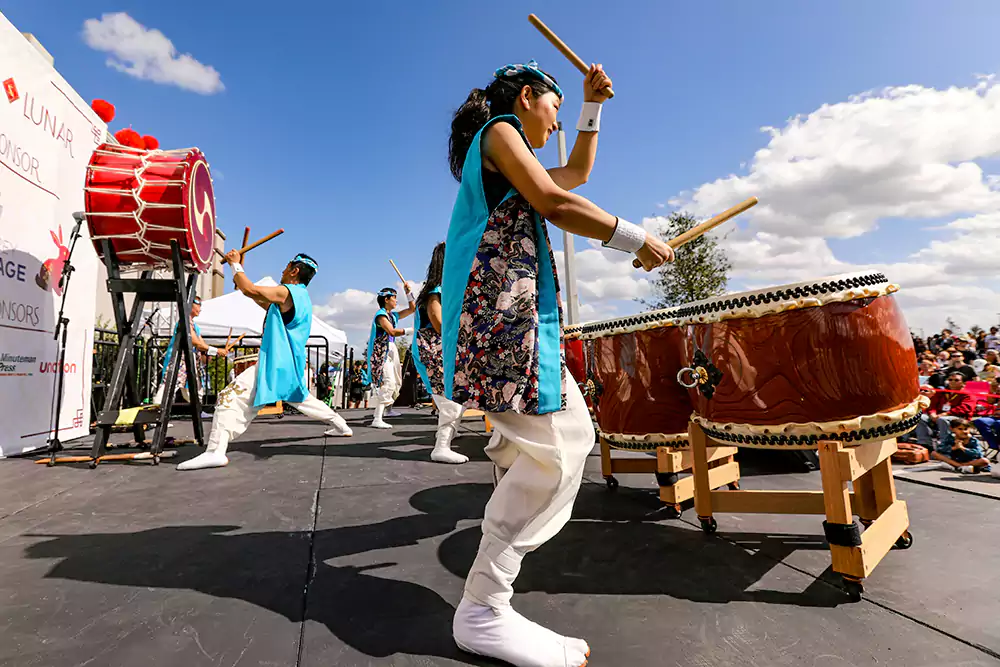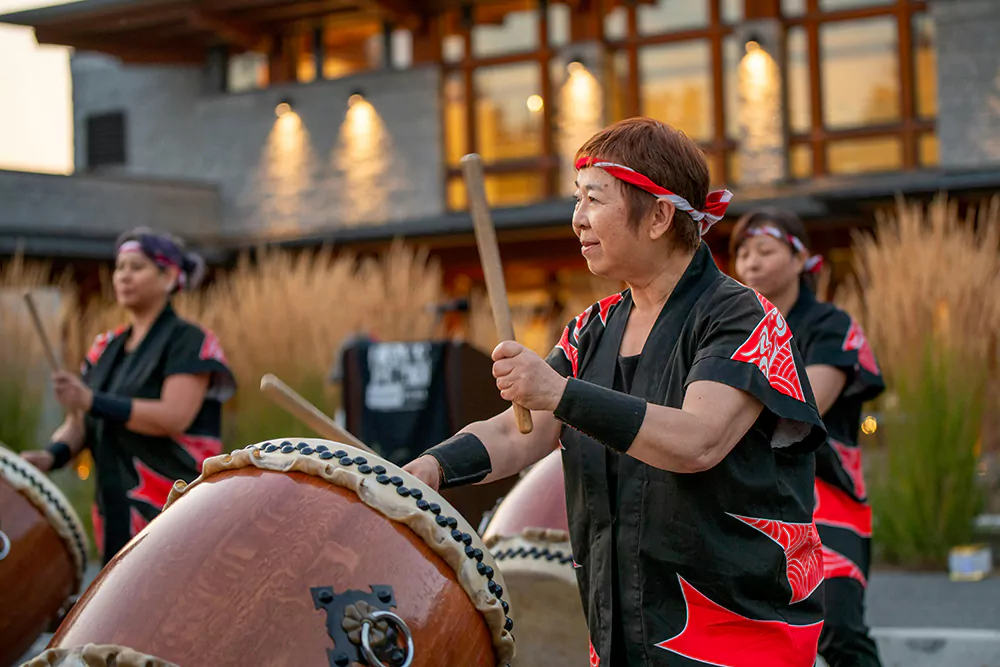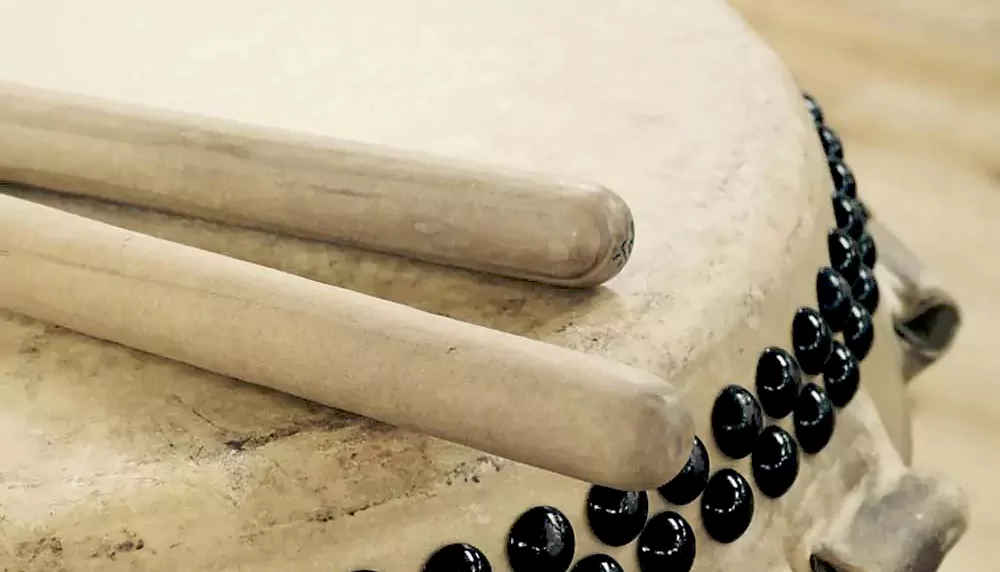I. Inception: An Offshoot from Chinese Ceremonial Rites
The Taiko story begins far back in the annals of China, where it was initially conceived with connotations of war and of mystical and royal functions that included flames. Drum battles using drums created using the skins of “Kui cattle” from the mythical text Shan Hai Jing make references to the legendary fight between Emperor Huang and Chi You.

The drum, during China’s Shang and Zhou Dynasties, was already in the most important place in ceremonial music, and it had to do with the symbolism of power, order, and spiritual communication. Lower frequency drums were utilized at the rituals to respect the heavens and earth. Higher frequency drums were used to direct the army; pi drums were played at the royal court to mark ceremonial rites. Its sound became, in the long run, an emblematic representation both of the emperor’s authority and of the gods’ voice.
The rhythm of the drum, from China, through the cross of the Korean peninsula and in the 5th century alive on the shore of Japan, was finding its way to the shaping of this completely individual cultural treasure.
II. Taiko’s Journey to Japan: From the Imperial Court to the People’s Heart
When Taiko first came to Japan, the first application was in the ceremonies of the imperial court and in religious rites. Clay figurines from Japan’s Tumulus period (300-538 AD) depict figures holding drums, marking that drum as a fixture of the court by at least the 5th century.

With the entry of Buddhism into Japan in the Asuka and Nara periods, temples adopted a Taiko drum not just for telling time but also to be a part of their spiritual practices. By the time it was the Heian period (794-1185 AD), Japan had developed its unique kind of Taiko. It was combined with other instruments in court music to come up with a uniquely Japanese sound. It was used in Shinto rituals as a holy instrument to reach the gods, working like a link through which humans and the spiritual world could communicate.
III. Taiko’s Japanese Transformation: A Cultural Reawakening
In Japan, from its reassignment under the Muromachi to Edo times, the period of renaissance, was the best time for Taiko. Shrines throughout Japan had started organizing their teams by the mid-Edo period, each having a different Taiko style that had never before been introduced before, starting a trend of rich, regional diversity.
It gradually found more and more use in the worlds of Noh and Kabuki theater, sometimes creating the very heartbeat of the performance, amplifying the drama and emotions on stage. In return for festivals, beginning with Taiko performances, drummers demonstrated their very skill, its rhythm now reverberating with nothing short of strength, unity, and spirit within a community.

IV. The Rise of Modern Taiko: From Tradition to the Global Stage
Inspired by ancient musical scores, jazz drummer Daihachi Oguchi created a new form of performance in 1951, “Kumi-daiko,” where various sizes of Taiko drums were played together in unison. It was then that Taiko was born as a forceful stage art.
The year was 1971 when an icon was born, Kodo— the Taiko troupe. With their pulsating, high-energy rhythmic displays humans felt their mastery of the world state—across five continents. Their performances drew that instant connection of man and nature, every beat resounding with Earth’s heartbeat and the pulse of life rhythmic. In their truth as artists, they reached into the hearts of everyone all over the universe to make Taiko much more than just Japanese drums but a metaphor for the human experience itself.

V. The Modern Rebirth of Taiko: Embracing New Horizons
1.Cross Genre at the Music Festivals
At modern music festivals, Taiko is now at its cross-genre fusion with rock, pop, and even electronic music. Strong and hypnotic, its rhythms and sounds put it at center stage—many festivals have placed it within their ambiance, for nothing commands an audience or treats it quite like the powerful energy of Taiko.
2.Taiko Drumming for Healing
Researches have shown how the deep, resonant vibrations from Taiko affect the mind and body. Taiko is used today as a medium for stress relief and meditation; it is also part of corporate team-building activities. It provides an avenue for healing and self-reconnection.

3.Taiko in Branding and Commercial Events
Taiko, with its powerful visual and auditory impact, has become an easy choice as another powerful symbol to convey to the world messages of branding and advertising in strength, passion, and unity – with every beat.
VI. The Art of Taiko: A Tradition Carried Through Time
Modern Taiko is more than an instrument. It is actually the embodiment of culture, emotion, and power. The best Taiko drums are made from prime woods such as beech and ash. These are developed using ages-old, as well as recent technology so as to sound balanced yet very expressive and deep.
VII. The Endless Drumbeat: The Eternal Echo of Taiko
Taiko, through the ages, assumed ancient musical reverence and now transcends humanity as an instrument. In all its rich tones and deep rhythms, it is music, yes, but far beyond such a word— it, in fact, is finding one’s own rhythm within the much deeper rhythm that life itself creates.

The low tone of Taiko on ancient battlefields inspired warrior hearts and would lead them into battle; and in temples, its beats would close the divide between the human and the divine. Today, Taiko continues to live and breathe not just in music festivals and plays but also as a fresh avenue through which to let feelings out, find new strength in the body, and bring people together.
It works just as powerfully today in Tokyo, New York, Paris, and Sydney as Taiko rhythms unite people, resonating deep in their hearts. It speaks to cultures everywhere because raw, primitive energy has become a universal language.
The pulse will continue forever and the beat is life as we have known it. Keep using Taiko to bridge the world and in this give out its power and emotion through the drum’s pulse.



